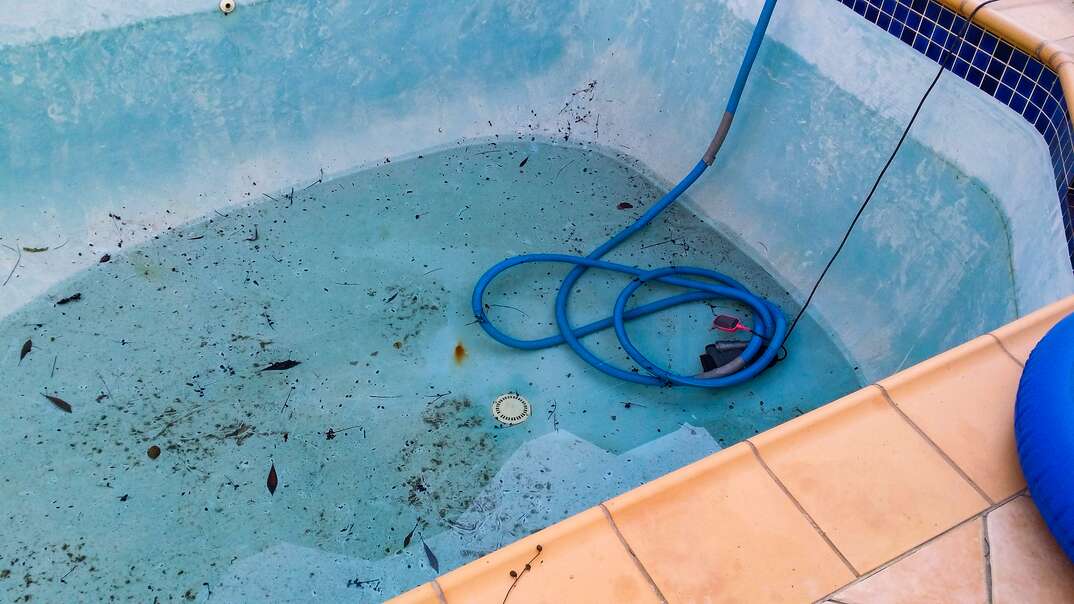How, When and Why to Drain Your Swimming Pool

Most swimming pool owners won’t have to worry about draining their pool completely. However, if you do find yourself in one of the circumstances that necessitates at least a partial pool purge, there are some recommended practices to consider.
This May Also Interest You: Keep Your Pool Running Swimmingly With These Maintenance Tips
Read on to learn all about the whys, whens and hows pertaining to draining your pool.
When Should I Drain My Pool?
Most pools rarely need to be drained due in large part to how complex and efficient the pool’s drainage system is. However, there are some instances when you may need to drain your pool. Knowing when it’s time to drain your pool can help ensure that your pool is operating at 100% effectiveness.
Here are some of the reasons why you may need to drain your pool:
Weather
Heavy rains could raise your pool water levels to the point where overflow is imminent. If that’s the case, you may need to drain some water off to prevent overflow issues.
Depending on the material your pool is made of, exposure to the elements could damage it. The best time to drain your pool completely, if you must, is when the weather is mild — usually in the spring or fall.
High Total Dissolved Solids Levels
Total dissolved solids, or TDS, are substances that can accumulate in the pool water over time. They can throw off the chemical balance of the pool, necessitating more chemicals be used to maintain your pool water. Note that it may not be necessary to drain the pool entirely to deal with this problem, so be sure to consult an expert before proceeding.
Repair Work
If your pool is in need of major repairs, you’ll more than likely need to drain the water completely beforehand. That said, most repair companies should be able to handle this task for you.
Repainting
If you’re looking to refinish or repaint your pool, obviously you’ll need to drain it first. Again, however, if a contractor is doing the work for you, they should be able to handle this for you.
How to Drain a Pool
There are several different methods to drain your pool. Which method works best for you will largely depend on what it is you’re trying to accomplish — and some are easier than others.
Here are some of the most common ways to drain your pool:
Cartridge Filter
If your pool has a cartridge filter, there are two different ways to go about draining the water. The first method is to use the drain plug:
- Shut off the pump and go to the back of the filter.
- Unscrew the drain plug.
- Turn the pump back on and let the water run until it reaches the desired level.
- Turn the pump back off.
- Put the plug back into the drain.
The other method is using the drain valve, if the system has a valve in between the pump and the filter:
- Shut the pump off.
- Rotate the valve so that it blocks the water going to the filter.
- Turn the pump on, and the water will come out of the opening.
- When you get to the point where you’ve drained enough water, turn the pump off.
- Turn the three-way valve back to the regular position.
Sand Filter
If your pool has a sand filter, here are the steps you need to follow in order to properly drain the water:
- Turn the pump off.
- Roll the backwash hose out into the yard or designated drainage area.
- Rotate the multiport valve on the top or side in a clockwise direction to the “waste” position.
- Turn the pump back on.
- After you get the correct amount of water out of your swimming pool, turn the pump back off.
- Rotate the multiport valve from the “waste” position, in a clockwise direction, back to “filter.”
- Lift up the backwash hose to a position in which all the water drains out and roll it back up.
D.E. Filter
If your pool has a diatomaceous earth or D.E. filter, here are the steps you need to follow in order to properly drain the water:
- Manually shut the pump off at the breaker box.
- Turn the multiport valve in a clockwise direction until you get to the “Waste” position.
- Turn the pump back on.
- When you've taken enough water out of the swimming pool, turn the pump off.
- Rotate the handle on the multiport valve in a clockwise direction until you get back to the “Filter” position.
- Turn the pump back on.
Since we’re all home now more than ever, being prepared for unexpected home repairs with a plan from HomeServe is important. Having a plan in place gives you the peace of mind knowing that you can simply call our 24/7 repair hotline for covered breakdowns. See what plans are available in your neighborhood.


